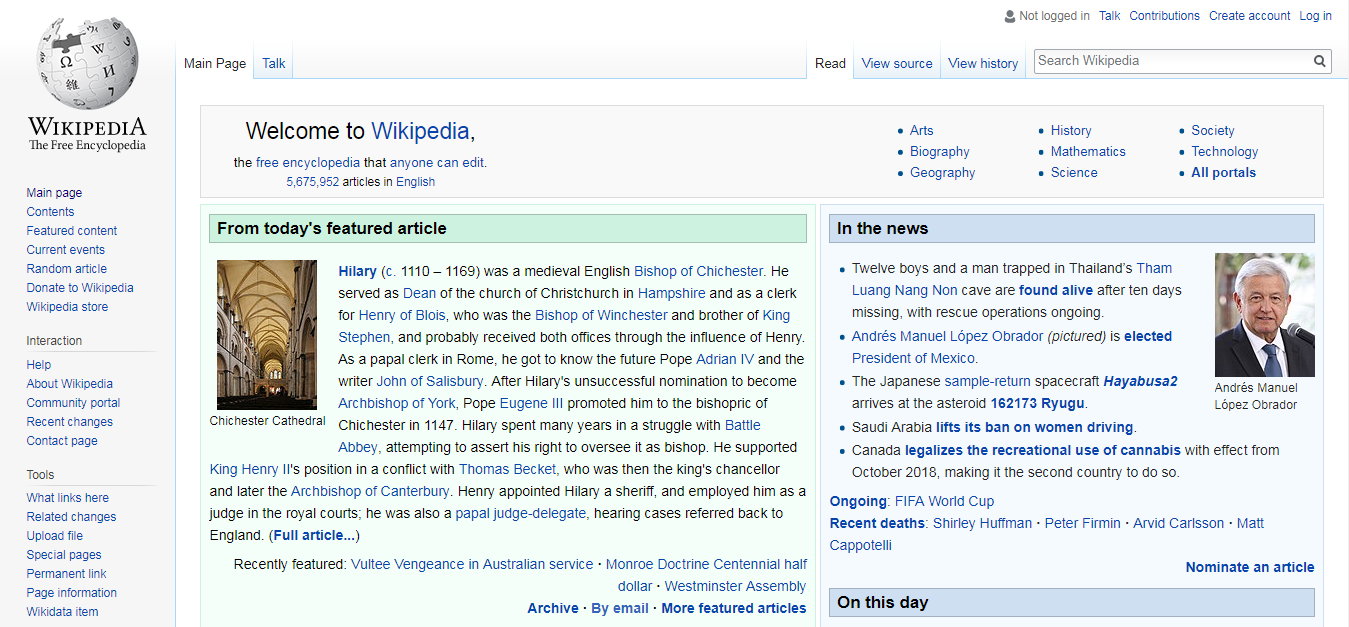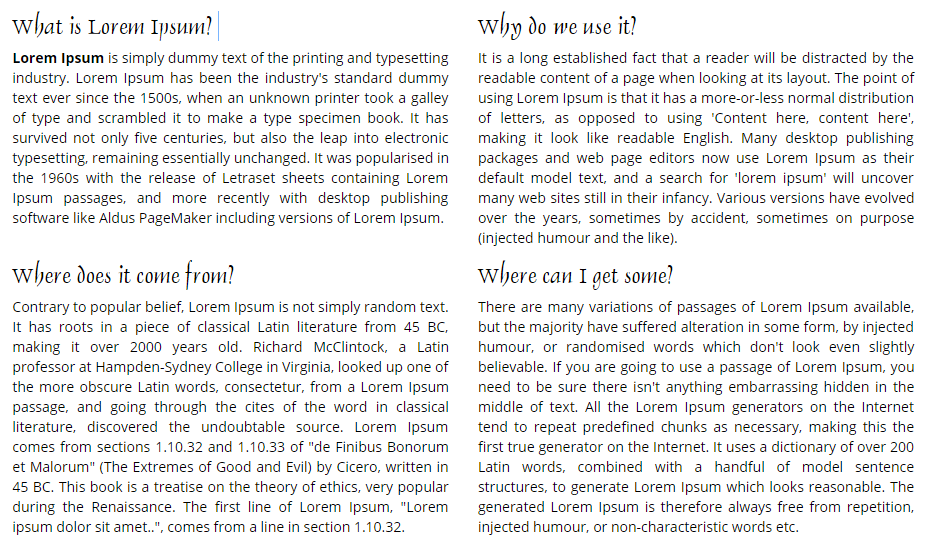HTML
What is On-Site (On-Page) and Off-Site (Off-Page) SEO?
The Process of optimizing content and HTML source code of the web pages is called as on-site SEO and The Process of optimizing that can impact the position of a website in the search engine results page (SERPs) is called as off-site SEO.

Table of Contents
1. Website
A website is a collection of web pages with hypertext, hyperlinks, and hypermedia information or content which is hosted or located on a web server. It is identified with a standard domain name for example, https://www.twinztech.com/
2. Web Page
A web page is a document generally written in HyperText Markup Language (HTML) and it is a smaller part of a website that usually contains particular information. It is identified with a standard page address or page URL for example, https://www.twinztech.com/write-for-us/
3. Website or Web Page Optimization
The Process of optimizing the design & structure of the HTML source code from scratch and web pages will rank well in SERPs and also index well in natural search results.
4. Search Engine Optimization (SEO)
Search engine optimization (SEO) is the process of getting high-quality traffic to your website, which is focused on organic search engine results.
SEO is the way to optimize their websites for search engines and improve their search engine rankings. See the below difference between On-Site SEO and Off-Site SEO.

5. What is On-Site or On-Page SEO?
On-site SEO is also known as On-Page SEO. The Process of optimizing content and HTML source code of the web pages is called on-site Search Engine Optimization (SEO).
On-Site SEO is the procedure of optimizing all web pages on the website to high ranking and gain more relevant traffic from search engines. On-Site search engine optimization is managed by you or the coding on your website or web page. Examples of On-Site SEO include HTML code, metadata (tags), good content with links and keywords, Heading tags, alt text of images, etc.
On-Page SEO is the procedure of optimizing particular web pages on a website to achieve high ranking and gain more relevant traffic from search engines.
6. On-Page SEO Ranking Factors
On-site optimization has a greater impact on search engine Ranking. It can rank higher on the Search Engine Results Page (SERPs).
1. Page Title Tag
2. Meta Title and Description
3. SEO Meta Tags (Refresh, viewport, robots & social meta tags )
4. Site URLs structure (permalinks structure)
5. Good content with keywords and links (internal and external links)
6. Images with alt text
7. Page Heading tags (h1, h2, h3, h4, h5 & h6)
8. Order and unorder list tags (UL & OL)
The above are the following main areas of the web page (On-site) optimization.
See examples of rich and poorly optimized on-site web pages.


7. What is Off-Site or Off-Page SEO?
Off-site SEO is also known as off-page SEO. The Process of optimizing can impact the position of a website in the search engine results page (SERPs), and it can perform outside the boundaries of your website. Such an optimization is called on-site Search Engine Optimization (SEO).
In SEO, off-Site optimization will affect your Website or Web page indexes in natural search results. off-Site SEO is not managed by you or the coding on your website or web page. It will involve improving traffic and page rank on the Search Engine Results Page (SERPs).
Many people compare off-site SEO with link building, but it is not only that.
There are:
- Link Building
- Social Media Marketing
- Social Bookmarking
A website needs high quality, and useful backlinks are possible to have from other websites. It is possible to have mentions on social media such as (Facebook likes, tweets, Pins, shares, followers, etc.) and it is possible to bookmark and share among social communities of friendly users.
8. Link Building
Link building is one of the most important and effective off-Page SEO Techniques. Building external links outside the boundaries of your website may be an attempt to gather as many likes and votes as possible, and you can also bypass your competitors and rank higher on google.
9. Social Media Marketing
Social Media Marketing is one of the off-site SEO techniques. It is part of link building but building links on outside popular social media sites. The links from social media get more traffic and the page ranks higher on Search engines.
The links from social media sites are “no follow” links, but this does not mean that they do not have any value. The proper configuration of social media profiles can also boost and improve SEO rankings.
10. Social Bookmarking
Social bookmarking is one of the off-site SEO techniques, but it is not accessible, and it used to be in the past, But it is still one of the right ways to get more traffic to your website. You can also find sites like reddit.com, stumbleupon.com, delicious.com, etc. that are used to promote your content on social communities.
11. Conclusion:
Similar way Off-site SEO is as important as on-site SEO. Your website needs both techniques to get more traffic and page rank higher on SERPs.
Helpful Resources:
1. 16 Best (free) AMP – (Accelerated Mobile Pages) WordPress Plugins
2. 16 Best Free SEO WordPress plugins for your Blogs & websites
3. What is Canonicalization? and Cross-Domain Content Duplication
HTML
Top JavaScript Libraries for Speeding Up Web Development
In this article, we can try to help coders with this tricky issue by highlighting the most popular open-source frameworks and commercial JavaScript libraries.

Developing a modern web application that covers the needs of a specific business can be time-consuming, and doing it from scratch makes the whole endeavor even more challenging. JavaScript remains one of the most widely used programming languages, geared to serve both the server and client sides.
Its rich ecosystem offers a vast number of open-source frameworks and libraries that facilitate coding acceleration and help avoid unnecessary bugs.
Free JavaScript tools often have to be complemented with paid UI libraries to tackle specific development tasks with the utmost efficiency. Generally, the use of ready-made UI components in the development flow provides the following advantages:
- Reducing time and monetary development costs
- Making the final product more affordable for end-users (replacing expensive tools like MS Project)
- Ensuring software consistency (unified design and API)
But with the abundance of available JavaScript tools, web developers frequently find it challenging to choose the right ones for their projects. This article can help coders with this tricky issue by highlighting the most popular open-source frameworks and commercial JavaScript libraries.
Open-Source JavaScript Frameworks
According to the State of Frontend 2020 survey, web developers still prefer choosing React, Vue.js, and Angular from the realm of JavaScript frameworks as their development helpers. Therefore, we’ve decided to include these well-known technologies in our review and complement this trio with the most popular CSS framework – Bootstrap.
Table of Contents
1. React

Created and supported by the Facebook development team, React is the most requested front-end framework dedicated to building versatile and SEO-friendly web UIs. This component-based framework supports unidirectional data flow, providing enhanced control over the whole project. It makes use of the Virtual DOM to boost the UI rendering.
It is helpful for apps requiring regular updates, such as Instagram. Migrating between React versions is very simple, as the process is automated in many ways with “code mods” provided by Facebook.
2. Angular

Angular JS is the most powerful and mature but, at the same time, complex JS framework. Backed by Google resources, Angular serves to building large-scale and feature-rich enterprise SPAs using HTML and TypeScript. It has a component-based architecture that increases the quality of written code and introduces two-way data binding to display info to end-users.
Utilizing a developer-friendly Angular CLI and intuitive template syntax helps to make the whole development process faster and more productive. Angular ensures the enhanced performance of apps due to a new rendering engine named Ivy being added this year in v9.0.
3. Vue.js

Vue.js is the fastest-growing JavaScript framework utilized by developers to create more maintainable and testable code bases for UIs and SPAs. This lightweight (just 20KB) tool benefits from adopting the strengths of competitive technologies, namely two-way data binding (Angular) and virtual DOM (React).
When programming with Vue.js, it is possible to use JS and TypeScript equally well and take advantage of reusable components. framework’s pre-coding structure allows developers to promptly deploy the app without any negative impact on its performance. Web developers won’t have to spend much time properly learning Vue.js, thanks to its approachable nature.
4. Bootstrap

Bootstrap is probably the first thing that comes to mind when styling and designing responsive mobile and web apps. In simple terms, Boostrap is a mix of CSS, HTML, and JS code. This CSS framework comes with a vast array of design templates for common UI elements (buttons, forms, dropdowns, etc.) and other pre-built components that can be implemented in web projects and fully customized to match any design requirements.
Also, Boostrap provides functional themes, examples, and JS plugins to help web developers make their apps more visually compelling. There are also special Bootstrap libraries that enable developers to incorporate UI elements in applications based on Angular, React, or Vue without additional coding efforts.
Commercial JavaScript Libraries
Suppose you need ready-made tools for quickly adding complex functionalities such as Gantt charts, Schedulers, or diagrams with editing and customization capabilities to your project. In that case, it is better to consider using commercial JavaScript libraries.
Web developers who invest in commercial JS components receive a rich feature set out of the box, regular updates as well as bug fixes and emergency bug fixes, and timely outsourced technical support. Now let us review several paid JavaScript libraries and how they can help in web projects.
5. DHTMLX

DHTMLX provides a JavaScript UI framework comprising plenty of powerful and fully customizable UI components such as Gantt chart, schedulers, Kanbans, Diagrams, spreadsheets, and many others. In terms of functionality, DHTMLX Gantt and Scheduler can be a great alternative to MS Project, Primavera, and Excel in project management apps.
All DHTMLX UI widgets are notable for modern Material design, advanced performance with a large amount of data, and extensive and straightforward API that can be quickly mastered and put to use. DHTMLX is compatible with React, Angular, and Vue.js and supports TypeScript.
6. Kendo UI

Kendo UI is an HTML5 user interface framework intended for creating enterprise-level applications that run well in various production environments. It contains a large package (70+) of out-of-the-box UI widgets with multi-framework support that looks native on any device.
The popular MVVM feature of this UI framework ensures robust two-way data binding capabilities. Using a variety of built-in customizable themes, it is possible to adjust the look and feel of Kendo-based apps to your liking.
7. Syncfusion Essential JS 2

Syncfusion Essential JS 2 is a JavaScript toolkit of diverse controls (grids, charts, calendars, etc.), helping to minimize the number of third-party components required to complete an enterprise application.
Entirely written in TypeScript, all these components are modular and can be independently incorporated into any project, regardless of your JS framework choice.
Thanks to a responsive design and support for touch devices, apps developed with the Syncfusion package are rendered nicely across different platforms, thereby reaching more end-users.
8. Sencha Ext.JS

Ext JS is Sencha’s JavaScript framework that provides a rich set of configurable, ready-to-use components for building enterprise-grade web applications. The Sencha community also supplies many additional user extensions.
When coding with Ext JS, it is possible to use different scripting techniques, MVC/MVVM architectural patterns, and OOP concepts. The framework is complemented with various special tools that enhance your capabilities without extra manipulations in the main areas of the programming process: design, development, and testing.
Summarizing the above, we can say that all reviewed JavaScript frameworks and libraries have something helpful to offer to any web development project, and it’s up to development teams to choose the right option depending on their needs.
The commercial JS components are compatible with most of the open-source frameworks, allowing web developers to put them together in powerful toolkits for completing resource-demanding enterprise apps.

 Instagram3 years ago
Instagram3 years agoBuy IG likes and buy organic Instagram followers: where to buy them and how?

 Instagram3 years ago
Instagram3 years ago100% Genuine Instagram Followers & Likes with Guaranteed Tool

 Business5 years ago
Business5 years ago7 Must Have Digital Marketing Tools For Your Small Businesses

 Instagram4 years ago
Instagram4 years agoInstagram Followers And Likes – Online Social Media Platform





















